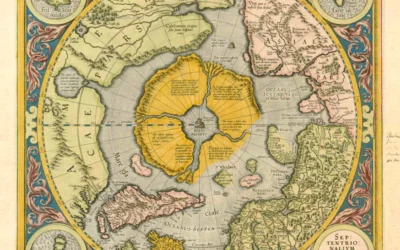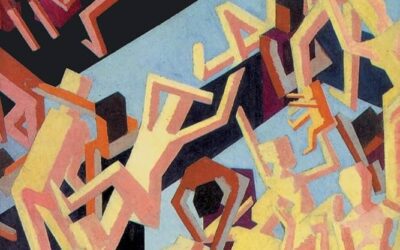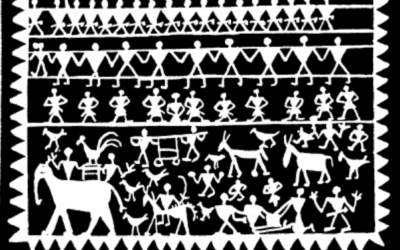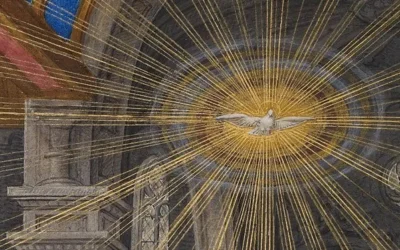What is the Sage Archetype?

The Sage archetype represents the eternal human pursuit of truth, knowledge, and wisdom. Transcending cultures and historical eras, the Sage embodies our desire to understand the world and our place within it [1]. This article explores the origins, characteristics, and significance of the Sage archetype, tracing its evolution from ancient mythologies to modern times.
Explore all the Archetypes
The Sage Archetype in Parts-Based Therapies
Parts-based therapies, such as Internal Family Systems (IFS), Schema Therapy, and Voice Dialogue, view the human psyche as composed of various parts or subpersonalities, each with its own unique characteristics, motivations, and coping mechanisms [25]. From this perspective, the Sage archetype can be understood as a potential part within an individual’s internal system.
Internal Family Systems (IFS)
In IFS, the Sage archetype may manifest as a wise, compassionate, and insightful part that helps guide the individual towards personal growth and self-awareness. This Sage part can serve as a valuable resource for the individual, offering guidance, support, and a broader perspective on life’s challenges [26].
However, if the Sage part becomes burdened or extreme, it may manifest as a critical or perfectionistic part that holds the individual to unrealistic standards or dismisses their emotional needs. In IFS therapy, the goal would be to unburden the Sage part and restore its natural, positive qualities.
Schema Therapy
In Schema Therapy, the Sage archetype may be associated with the “Healthy Adult” mode, which represents a well-integrated, balanced, and nurturing presence within the individual’s psyche. The Healthy Adult mode embodies wisdom, compassion, and the ability to meet one’s emotional needs in a healthy manner [27].
However, if an individual has experienced trauma or adversity related to the Sage archetype, they may develop maladaptive schemas such as “Unrelenting Standards” or “Emotional Inhibition,” which can lead to a disconnection from their authentic wisdom and emotional needs. Schema Therapy aims to help individuals heal these maladaptive schemas and strengthen their Healthy Adult mode.
Voice Dialogue
In Voice Dialogue, the Sage archetype may be viewed as a distinct subpersonality or “voice” within the individual’s psyche. This Sage voice can be dialogued with to gain insight, wisdom, and guidance on various aspects of life [28].
However, if the Sage voice becomes dominant or imbalanced, it may lead to a neglect of other important voices, such as the emotional or intuitive voices. Voice Dialogue therapy aims to help individuals create a more balanced and harmonious inner system by facilitating communication and cooperation among the various voices.
Therapeutic Applications
By understanding the Sage archetype from a parts-based perspective, therapists can help individuals:
- Identify and strengthen their inner Sage part or voice, harnessing its wisdom and guidance for personal growth and decision-making.
- Recognize and work with any maladaptive or imbalanced manifestations of the Sage archetype, such as critical or perfectionistic parts.
- Integrate the Sage archetype with other important parts or voices within their psyche, creating a more balanced and harmonious inner system.
- Heal past wounds or traumas related to the Sage archetype, allowing for a more authentic and empowered expression of wisdom and self-awareness.
The Sage’s Role in the Hero’s Journey
In Joseph Campbell’s monomyth, the Hero’s Journey, the Sage archetype plays a crucial role as a mentor, guide, and source of wisdom for the hero. The Sage helps the hero navigate the challenges of their journey, providing guidance, knowledge, and support as they face trials and tribulations [2].
On a symbolic level, the Sage represents the hero’s journey towards integration and wholeness. The Sage embodies the psychological processes of gaining insight, self-awareness, and a deeper understanding of one’s place in the world. By seeking out and internalizing the Sage’s wisdom, the hero undergoes a transformative process that leads to personal growth and the realization of their full potential.
The Sage archetype also represents the qualities of wisdom, authority, and clear vision. In the Hero’s Journey, the Sage often serves as a beacon of light, illuminating the path ahead and helping the hero see beyond their limitations. The Sage’s wisdom and guidance enable the hero to make difficult decisions, overcome obstacles, and ultimately achieve their quest.
Emotionally, the Sage represents a sense of calm, stability, and inner peace. By embodying the Sage’s qualities, the hero learns to manage their emotions, maintain clarity of thought, and approach challenges with a balanced perspective. The Sage’s presence in the Hero’s Journey serves as a reminder that growth and transformation are possible, even in the face of adversity.
The Role of the Sage in Prehistory and Ancient History
In prehistoric times, the Sage served as a spiritual leader, healer, and keeper of oral traditions, ensuring the survival and well-being of their community [3]. The Sage played a crucial role in the evolution of human culture and consciousness by helping to make sense of the world, providing guidance, and preserving knowledge for future generations.
In ancient civilizations, the Sage archetype took on various forms, from mythological figures to philosophers and scholars.
The Sage in Mythology
- Greek mythology: Athena and Socrates as embodiments of wisdom and truth-seeking [4]
- Egyptian mythology: Thoth as the god of wisdom, writing, and learning [5]
- Chinese mythology: Confucius as the Sage of moral virtue and education [6]
The Sage in World Religions
The Sage archetype is deeply embedded in the world’s major religions, often in the form of spiritual leaders, prophets, and enlightened beings.
Christianity
- Jesus Christ as the embodiment of divine wisdom [7]
- Apostle Paul as a Sage figure expounding on theological and moral issues [8]
Buddhism
- Buddha as the ultimate Sage who attained enlightenment and liberation from suffering [9]
- Buddhist philosophers like Nagarjuna and Vasubandhu developing and interpreting the Buddha’s teachings [10]
Islam
- Muhammad as the final prophet and recipient of divine wisdom through the Quran [11]
- Islamic scholars and philosophers like Al-Ghazali and Averroes pursuing religious and philosophical knowledge [12]
The Sage in Literature and Art
The Sage archetype has been a constant presence in literature and art throughout history, from ancient Greek drama to modern-day mentors in popular fiction [13]. Examples include:
- Merlin in Arthurian legend
- Gandalf in J.R.R. Tolkien’s The Lord of the Rings
- Dumbledore in J.K. Rowling’s Harry Potter series
Visual art has also depicted the Sage archetype, symbolizing wisdom and learning through scrolls, books, and other attributes [14].
The Sage in Psychology and Personal Development
Carl Jung considered the Sage one of the fundamental archetypes within the collective unconscious, representing the pursuit of knowledge, truth, and self-awareness [15]. The Sage archetype encourages individuals to cultivate wisdom, self-reflection, and a love for learning, aiding in personal growth and development [16].
According to Anthony Stevens in “Archetypes: A Natural History of the Self,” the Sage archetype is associated with the psychic functions of thinking and intuition. The Sage’s drive for knowledge and understanding stems from a deep-seated need to make sense of the world and find meaning in existence [24].
The Shadow Side of the Sage
While the Sage archetype is generally associated with positive qualities, it also has a shadow side that must be acknowledged. The shadow Sage can manifest as intellectual arrogance, dogmatism, and a detachment from practical reality [17].
Integrating the Sage Archetype
To harness the positive potential of the Sage archetype while avoiding its shadow aspects, individuals must strive for a balanced and integrated approach to wisdom and knowledge. This involves cultivating humility, questioning one’s assumptions, and applying wisdom to real-world challenges [18].
The Sage in Relationships, Careers, and Life
The Sage archetype can manifest in various aspects of life, influencing our relationships, careers, and personal development.
Relationships
In relationships, the Sage may take on the role of a mentor, offering guidance and wisdom to their partner. However, the Sage must be mindful not to become overly critical or dismissive of their partner’s perspectives.
Careers
Individuals with a strong Sage archetype may be drawn to careers in education, research, writing, or consulting. They thrive in environments that foster intellectual growth and allow them to share their knowledge with others.
Interpersonal Neurobiology and Somatic Experience
The Sage archetype may inform our somatic experience by influencing the emotions we overidentify with or avoid feeling. For example, a Sage-oriented individual may overidentify with feelings of intellectual superiority while avoiding emotions that challenge their sense of knowledge and control.
The Sage’s Emotional and Somatic Expression
The Sage archetype can manifest emotionally as a deep curiosity, a love for learning, and a sense of fulfillment when sharing knowledge with others. On the other hand, when the Sage is out of balance, it may lead to feelings of intellectual superiority, impatience with those perceived as less knowledgeable, or a sense of isolation due to an overemphasis on intellectual pursuits.
Somatically, the Sage archetype may be experienced as a sense of mental clarity, heightened awareness, and a strong connection to one’s intuition. When the Sage is suppressed or neglected, individuals may feel mentally stagnant, disconnected from their inner wisdom, or physically drained due to an imbalance between intellectual and other aspects of life.
Trauma and the Sage Archetype
Trauma related to the Sage archetype can manifest in two primary ways: enmeshment and avoidance. Enmeshment with the Sage archetype may lead to an over-identification with intellectual pursuits, neglecting emotional and physical needs. This can result in feelings of burnout, isolation, and difficulty connecting with others on a deep, emotional level.
Avoidance of the Sage archetype may stem from experiences of intellectual humiliation, causing individuals to shy away from learning opportunities or sharing their knowledge with others. This can lead to feelings of inadequacy, self-doubt, and a sense of being disconnected from one’s inner wisdom.
The Sage in Politics and Religion
In politics, the Sage archetype can manifest as visionary leaders who seek to guide their communities toward a better future through wisdom and understanding. However, when the shadow aspects of the Sage emerge, political figures may become dogmatic, inflexible, or use their knowledge to manipulate others for personal gain.
In religion, the Sage archetype often takes the form of spiritual teachers, gurus, or religious scholars who help others navigate the complexities of faith and meaning. The Sage’s wisdom can facilitate a deeper understanding of religious texts, practices, and the transcendent function of spirituality. However, when the shadow Sage is present, religious leaders may become overly rigid, dismissive of alternative perspectives, or use their knowledge to control and exploit their followers.
The Balanced Sage: Benefits and Opportunities
When the Sage archetype is balanced and integrated, it can bring numerous benefits to an individual’s life. A balanced Sage is compassionate, open-minded, and able to apply their wisdom to real-world challenges. They are lifelong learners who value personal growth and are skilled at communicating their knowledge to others in a way that is accessible and empowering.
Embracing the balanced Sage can lead to a greater sense of purpose, improved relationships, and a more fulfilling career path. By tapping into the Sage’s wisdom and sharing it with others, individuals can contribute to the collective growth and evolution of their communities and society as a whole.
The Sage in the Modern World
In today’s rapidly changing and complex world, the Sage archetype is more relevant than ever. The modern Sage must navigate the challenges of information overload, media literacy, and the ethical implications of emerging technologies [19].
The Digital Age
- Online educators and thought leaders sharing knowledge through digital platforms [20]
- Collaborative knowledge-sharing projects like Wikipedia embodying the Sage’s desire to compile and disseminate information [21]
Artificial Intelligence
- The potential for machine learning to augment and enhance human wisdom [22]
- Ethical considerations surrounding the development and application of AI technologies [23]
Timeline of the Sage Archetype’s Development
The Sage archetype has evolved throughout human history, adapting to the needs and challenges of each era. Here is a timeline of its development:
- Prehistoric times: Shamans and spiritual leaders serving as Sages for their communities
- Ancient civilizations: Emergence of mythological Sage figures and philosophers
- World religions: Prophets, enlightened beings, and religious scholars embodying the Sage archetype
- Middle Ages: Monastic scholars and wise rulers guiding their societies
- Renaissance: Humanist thinkers and artists reviving classical wisdom
- Enlightenment: Philosophers and scientists pushing the boundaries of knowledge
- Modern era: Educators, researchers, and thought leaders adapting to the challenges of the digital age
The Sage Archetype’s Role in the Evolution of Human Culture and Consciousness
Throughout history, the Sage archetype has played a crucial role in the evolution of human culture and consciousness. By seeking and sharing knowledge, Sages have helped societies navigate the unknown, adapt to new challenges, and push the boundaries of understanding.
For example, in prehistory, Shamans crossed boundaries to bring new ideas and practices from the realm of “the other” into their communities. This allowed for the integration of novel perspectives and the expansion of collective knowledge.
In modern times, Sages continue to drive cultural evolution by questioning established norms, proposing innovative solutions, and fostering critical thinking. They help society maintain a balance between preserving valuable traditions and embracing necessary change.
The Sage Archetype in Posture and Somatic Experience
The Sage archetype can manifest in an individual’s posture and somatic experience. Those strongly identified with the Sage may exhibit an upright, dignified posture that conveys confidence and authority. They may carry themselves with a sense of groundedness and stability, reflecting their inner wisdom and self-assurance.
However, when the Sage archetype is out of balance or suppressed, it can contribute to somatic issues such as chronic pain. For example, individuals who overemphasize intellectual pursuits at the expense of physical well-being may experience tension headaches, neck and shoulder pain, or back problems due to prolonged periods of sitting and studying. Neglecting the body’s needs for movement, rest, and relaxation can exacerbate these issues.
Additionally, those who have experienced trauma related to the Sage archetype, such as intellectual humiliation or the suppression of their curiosity and love for learning, may develop somatic symptoms as a way of expressing their unresolved emotional pain. This can manifest as chronic fatigue, digestive issues, or generalized pain throughout the body.
To promote physical well-being and alleviate somatic issues related to the Sage archetype, individuals can engage in practices that honor the body’s wisdom, such as yoga, tai chi, or mindfulness-based movement. Regular exercise, proper posture, and ergonomic workspaces can also help prevent and manage pain associated with intellectual pursuits.
Enneagram and MBTI Correlations with the Sage Archetype
The Sage archetype shares some characteristics with certain Enneagram and Myers-Briggs Type Indicator (MBTI) personality types.
Enneagram:
- Type 5 (The Investigator): The Sage archetype resonates with the Type 5’s desire for knowledge, understanding, and mastery. Both are driven by a deep curiosity and a need to make sense of the world around them.
- Type 9 (The Peacemaker): The Sage’s ability to see multiple perspectives and offer wise counsel aligns with the Type 9’s desire for harmony and understanding. Both strive to maintain a balanced, objective view of situations.
MBTI:
- INTP (Introverted, Intuitive, Thinking, Perceiving): The Sage archetype shares the INTP’s love for ideas, logic, and theoretical understanding. Both are driven by a desire to explore complex concepts and find innovative solutions to problems.
- INTJ (Introverted, Intuitive, Thinking, Judging): The Sage’s strategic thinking, long-term vision, and ability to see patterns and connections align with the INTJ’s personality traits. Both are driven by a desire to master their chosen fields and share their knowledge with others.
It’s important to note that while these correlations can provide insight into the Sage archetype, individuals of any Enneagram or MBTI type can embody the Sage’s qualities or be influenced by this archetype.
The Sage Archetype in Screenwriting and Fiction Plotting
In screenwriting and fiction plotting, the Sage archetype often plays a crucial role as a mentor, guide, or wise counsel to the protagonist. The Sage’s primary function is to impart knowledge, provide guidance, and help the hero navigate the challenges of their journey.
Some common ways the Sage archetype is used in storytelling include:
- The Mentor: The Sage acts as a mentor to the protagonist, offering wisdom, training, and support. Examples include Obi-Wan Kenobi in Star Wars, Gandalf in The Lord of the Rings, and Mr. Miyagi in The Karate Kid.
- The Oracle: The Sage provides profound insights or prophecies that guide the hero’s journey. Examples include the Oracle in The Matrix, Rafiki in The Lion King, and Grandmother Willow in Pocahontas.
- The Wise Fool: The Sage archetype can manifest as a wise fool, using humor, riddles, or unconventional behavior to impart wisdom. Examples include Yoda in Star Wars, the Cheshire Cat in Alice in Wonderland, and Rafiki in The Lion King.
- The Fallen Mentor: The Sage may serve as a cautionary tale, having failed to heed their own wisdom or succumbed to the shadow aspects of the archetype. Examples include Daedalus in Greek mythology and Melchizedek in The Alchemist.
- The Inner Sage: The protagonist may encounter their own inner Sage through dreams, visions, or moments of introspection. This often catalyzes personal growth and self-discovery. Examples include the conversations between Pocahontas and Grandmother Willow, and the relationship between Neo and his own intuition in The Matrix.
The Power of the Sage
The Sage archetype represents a timeless and universal human aspiration: the quest for wisdom, truth, and understanding. By examining the Sage archetype in its various manifestations and integrating its positive qualities, we can contribute to a wiser, more compassionate, and more enlightened world.
As we navigate the complexities of the modern era, the Sage’s guidance is more valuable than ever. By cultivating the Sage within ourselves and recognizing its presence in others, we can tap into a deep well of wisdom and insight, enabling us to face the challenges of our time with grace, resilience, and understanding.
Bibliography
- Jung, C. G. (1969). The Archetypes and the Collective Unconscious. Princeton University Press.
- Campbell, J. (1949). The Hero with a Thousand Faces. New World Library.
- Eliade, M. (1964). Shamanism: Archaic Techniques of Ecstasy. Princeton University Press.
- Hard, R. (2004). The Routledge Handbook of Greek Mythology. Routledge.
- Budge, E. A. W. (1969). The Gods of the Egyptians. Dover Publications.
- Yao, X. (2000). An Introduction to Confucianism. Cambridge University Press.
- The Holy Bible, New International Version. (2011). Zondervan.
- Dunn, J. D. G. (1998). The Theology of Paul the Apostle. Eerdmans.
- Armstrong, K. (2001). Buddha. Penguin Books.
- Williams, P. (2008). Mahayana Buddhism: The Doctrinal Foundations. Routledge.
- The Quran. (2004). Translated by M. A. S. Abdel Haleem. Oxford University Press.
- Leaman, O. (2002). An Introduction to Classical Islamic Philosophy. Cambridge University Press.
- Bloom, H. (1998). Shakespeare: The Invention of the Human. Riverhead Books.
- Panofsky, E. (1972). Studies in Iconology: Humanistic Themes in the Art of the Renaissance. Harper & Row.
- Jung, C. G. (1968). Man and His Symbols. Dell Publishing.
- Maslow, A. H. (1968). Toward a Psychology of Being. Van Nostrand Reinhold.
- von Franz, M.-L. (1980). The Psychological Meaning of Redemption Motifs in Fairytales. Inner City Books.
- Wilber, K. (2000). Integral Psychology: Consciousness, Spirit, Psychology, Therapy. Shambhala Publications.
- Prensky, M. (2001). Digital Natives, Digital Immigrants Part 1. On the Horizon, 9(5), 1-6.
- Siemens, G. (2005). Connectivism: A Learning Theory for the Digital Age. International Journal of Instructional Technology and Distance Learning, 2(1).


























0 Comments